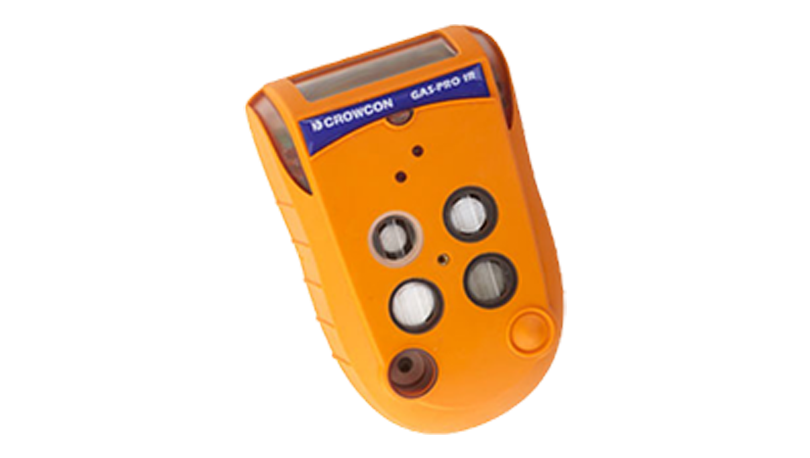
o2
Tlen
Tlen (O2) jest bezbarwnym, pozbawionym smaku i zapachu gazem, choć w stanie ciekłym i stałym wydaje się bladoniebieski.
Ma on kluczowe znaczenie dla podtrzymania życia, ponieważ jest wykorzystywany podczas oddychania. Jednak wysokie stężenie tlenu tworzy wzbogacone środowisko, które może przyspieszyć spalanie. Materiały, które mogą nie palić się w normalnym powietrzu, mogą palić się energicznie w środowisku bogatym w tlen, a zwykła iskra wystarczy, aby potencjalnie spowodować pożar.
W wielu procesach przemysłowych poziom tlenu może być wypierany przez inne gazy, dlatego ważne jest monitorowanie poziomu tlenu i ewakuacja, jeśli poziom tlenu spadnie poniżej 19,5% objętości.
Bezbarwny, bezwonny i bez smaku
Wspomaga spalanie
Nietoksyczny w normalnych stężeniach atmosferycznych
Naturalna obfitość (około 21%)
19,5%
minimalny i 23,5% maksymalny "bezpieczny poziom"
Więcej o tlenie
| Zagrożenie | Wspomaga spalanie, może powodować pożary lub eksplozje we wzbogaconej atmosferze. |
| Klasyfikacja | Nie sklasyfikowany jako toksyczny lub łatwopalny, ale jest utleniaczem |
| Limity ekspozycji |
Tlen cStężenie tlenu w powietrzu (20,954%). 19,5% minimalnego i 23,5% maksymalnego "bezpiecznego poziomu" (OSHA). |
| Obecne branże | Zastosowania medyczne i przemysłowe, spawanie, lotnictwo i kosmonautyka, przetwórstwo chemiczne |
| Wpływ na zdrowie | Długotrwałe narażenie na wysokie stężenia może powodować toksyczność tlenową, wpływając na płuca i centralny układ nerwowy. |
| Wpływ na środowisko | Brak bezpośredniego wpływu na środowisko; niezbędny do życia i procesów spalania |
| Czas trwania w powietrzu | Pozostaje w atmosferze przez czas nieokreślony, stanowiąc część powietrza, którym można oddychać na Ziemi. |
Tlen jest niezbędnym składnikiem życia, zużywanym podczas oddychania. Jednak wysokie stężenie tlenu może przyspieszyć spalanie i stworzyć wzbogacone środowisko, które może prowadzić do bardziej intensywnych pożarów.
Zwiększony poziom tlenu (wzbogacenie) znacznie zwiększa palność materiałów palnych. Materiały, które nie palą się łatwo w powietrzu, takie jak metale, mogą stać się łatwo palne w atmosferze wzbogaconej tlenem i może dojść do samozapłonu.
Jednak nie tylko wzbogacone środowiska stanowią zagrożenie. Zmniejszony poziom tlenu (zubożenie) może wystąpić w wyniku zwiększonej obecności innych gazów (np. azotu lub helu) i może wystąpić bez naszej świadomości w przypadku wielu powszechnych bezwonnych i bezbarwnych gazów.
Niedobór tlenu jest efektem ubocznym wielu procesów biologicznych lub chemicznych i może prowadzić do senności, utraty przytomności, uszkodzenia mózgu, a nawet śmierci, co sprawia, że monitorowanie bezpiecznego poziomu tlenu ma ogromne znaczenie.
Jak wykrywać tlen
Potrzebujesz porady eksperta?
Zespół Crowcon jest liderem w branży wykrywania gazów i posiada wieloletnie doświadczenie w pracy z substancjami takimi jak tlen. Jeśli potrzebujesz porady na temat wykrywania gazów i bezpieczeństwa, członek naszego zespołu jest zawsze pod ręką, aby poprowadzić Cię przez najlepsze zasoby i porady, aby zapewnić bezpieczeństwo Tobie, Twojemu zakładowi i Twojemu personelowi.
Przeczytaj o polityce prywatności Crowcon Polityka prywatności i plików cookie tutaj. Jeśli zmienisz zdanie, możesz zrezygnować z subskrypcji w dowolnym momencie


















